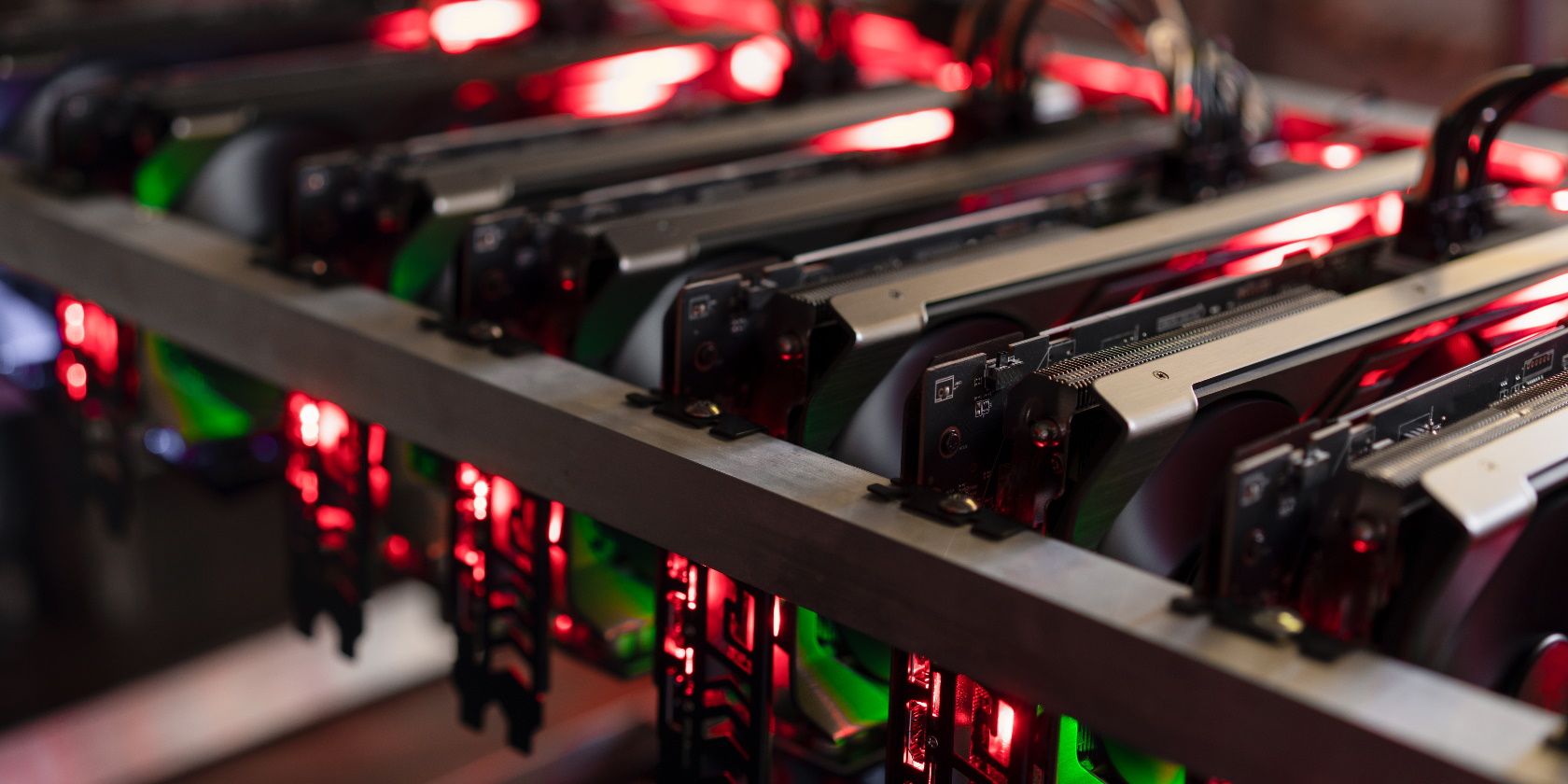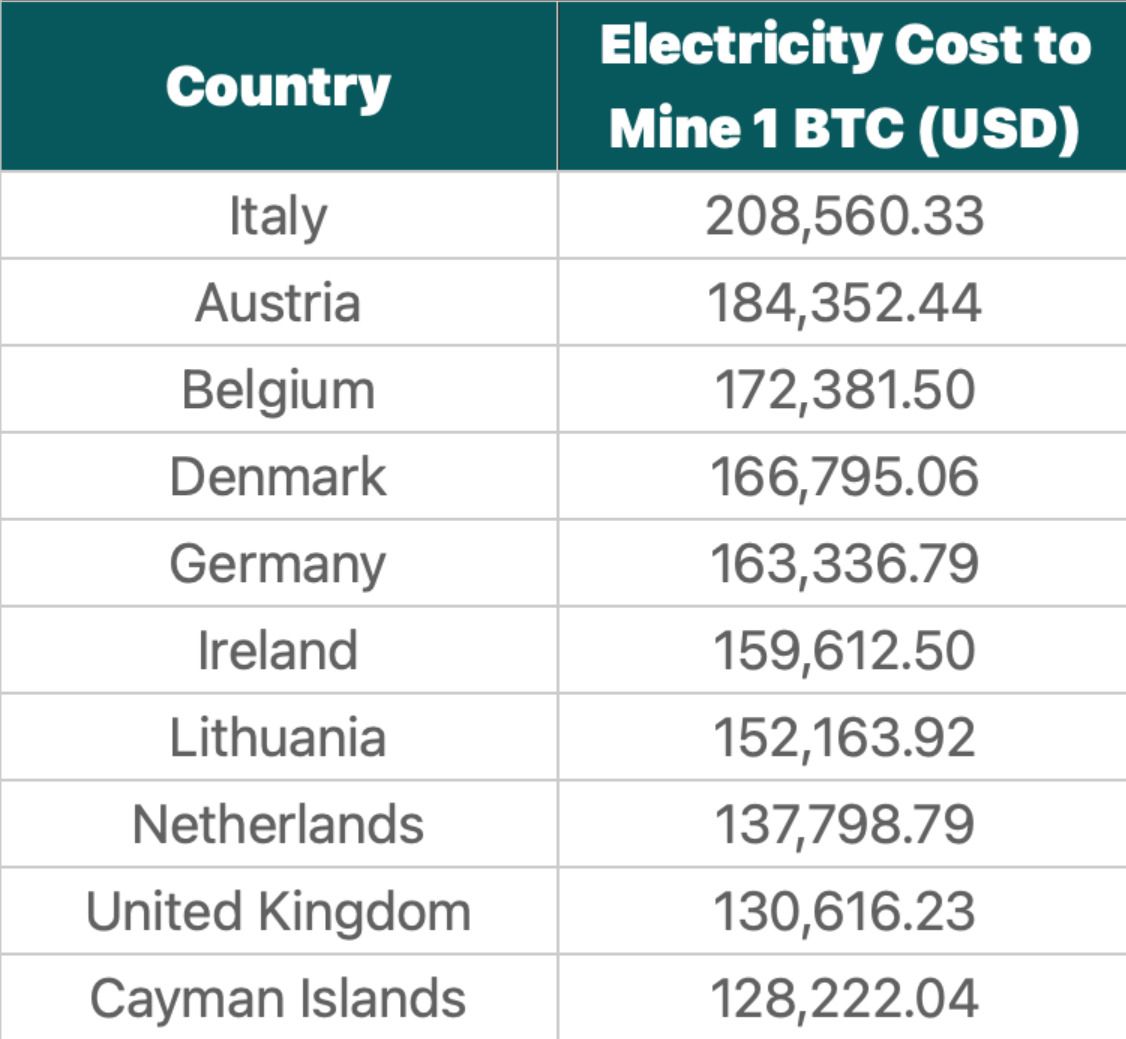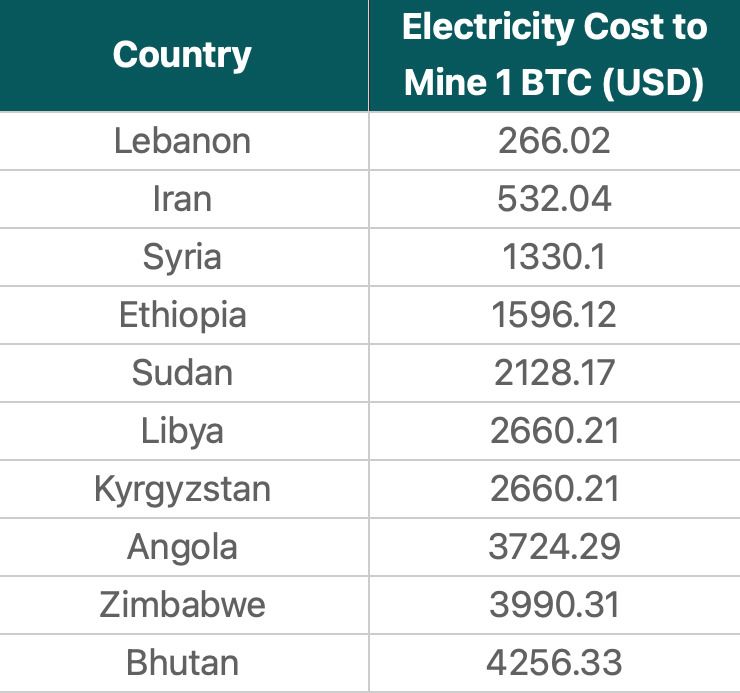Key Takeaways
- Bitcoin mining requires significant electricity consumption, making it crucial for miners to balance their expenses and earnings to make a profit.
- The process of mining Bitcoin plays a vital role in maintaining the security of the Bitcoin network and ensuring genuine transactions.
- The cost of mining 1 BTC varies greatly by country, with some countries offering cheap electricity that makes mining more profitable, while others have high electricity costs that limit profitability.
Mining Bitcoin is like a digital treasure hunt, but it’s not all fun and games. Electricity costs play a significant role in whether miners can make money. Just as you need to spend your allowance wisely, miners must manage their expenses and earnings. And because electricity prices differ worldwide, mining Bitcoin can be a better deal for some people and a tougher one for others.
What Is Bitcoin Mining?
Bitcoin miners utilize electricity to power their computers and mine the cryptocurrency. However, they receive a reward of new Bitcoin upon solving complex mathematical equations. Therefore, they must earn more from the Bitcoin they acquire than they spend on electricity. In the case of cheap electricity, it’s simpler to make a profit, but with expensive electricity, it becomes more challenging.
Mining is analogous to a computer participating in a marathon. It’s a lot of effort, and it also consumes a lot of electricity. Miners have massive, high-powered computers that operate constantly, necessitating a significant amount of energy. The cost of this energy varies between regions, and many believe Bitcoin mining has a significant environmental impact. However, Bitcoin mining has some surprising positives, too.
What’s the Point of Mining Bitcoin?
The process of Bitcoin mining is crucial in maintaining the safety and security of the Bitcoin network. Miners play a vital role in ensuring all transactions are genuine and honest. Another aspect is related to the limited Bitcoin supply. Did you know that Bitcoin has a maximum supply of 21 million? This limit was intentionally programmed into its protocol by its anonymous creator, Satoshi Nakamoto, to ensure that Bitcoin remains a scarce asset that cannot be easily manipulated like traditional currencies.
Currently, 19.47 million Bitcoins have been mined and are circulating, while there are still around two million left to be mined. The Bitcoin market may well change after all 21 million Bitcoins are mined.
Moreover, the 21 million Bitcoin limit guarantees no chance of inflation. Inflation happens when there is an increase in the supply of a currency, which results in a decrease in its purchasing power. Governments can manipulate traditional currencies by printing more money, which causes inflation. However, Bitcoin’s supply is fixed, which means it is immune to inflationary pressures.
In some countries, Bitcoin miners can make more money because electricity is cheap. But miners might not make much in other countries because electricity costs consume most of their earnings.
How Much Does It Cost to Mine 1 BTC?
It’s interesting to consider what solo Bitcoin mining looks like in 2023. According to a CoinGecko report published on August 17, 2023, solo Bitcoin mining is only profitable in 65 countries when considering electricity costs. Of these countries, 34 are located in Asia, while Europe has only five. Solo Bitcoin miners often face the challenge of high electricity costs above the global average.
“The average household electricity cost to mine 1 Bitcoin is $46,291.24, which is 35% higher than the average daily price of 1 BTC in July 2023 ($30,090.08).“
The Most Unprofitable Countries to Mine 1 BTC
According to the study, Italy is considered the most expensive country for household Bitcoin mining, costing $208,560 per Bitcoin. This means that mining one Bitcoin in Italy costs about the same as the value of eight Bitcoins. Austria comes in second at $184,352, followed by Belgium at $172,382.
Based on household electricity costs, nine out of the ten least profitable Bitcoin mining countries are in Europe.
The report states that “the increase in household electricity prices within the European region has been attributed to various factors, including the global surge in wholesale electricity prices, which emerged amid the COVID-19 pandemic and growing international demand.”
The Most Profitable Countries to Mine 1 BTC
In contrast, mining solo for one Bitcoin in Asia (and Africa) has the lowest average cost of $20,635.62. This is because Asia is the only region where the average household electricity costs are low enough to make solo mining profitable.
Individual miners in Lebanon can generate a Bitcoin for only $266 due to the low household electricity rates. This is significantly cheaper than in Italy, where the cost of mining a Bitcoin is approximately 783 times higher. Other regions in the list are as follows:
In certain countries, mining Bitcoin may seem profitable due to low electricity costs. However, it can also have negative consequences, such as overloading the power grid and causing blackouts. Iran, for example, legalized Bitcoin mining in 2019 but has since banned it multiple times due to power shortages during high-consumption months. Despite the low cost of mining electricity at $532.04, the country has faced challenges in maintaining a stable power supply and unstable political situation.
Bitcoin Mining Is Expensive
Bitcoin mining has advantages but has also sparked worries about its energy usage. This is because the process demands a lot of computational power, leading to high electricity consumption. However, as the industry advances, attempts are being made to create more energy-efficient mining techniques, decreasing its negative environmental impact.







